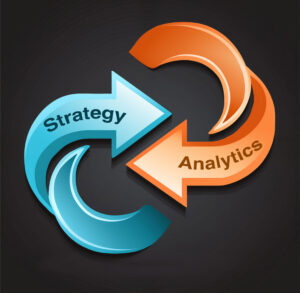 Strategalytics is a powerful methodology that combines strategy and analytics to drive business growth. What truly sets it apart is its adaptability; customizing Strategalytics allows it to be tailored to the unique needs of any business, ensuring that every strategy is aligned with specific goals and market conditions.
Strategalytics is a powerful methodology that combines strategy and analytics to drive business growth. What truly sets it apart is its adaptability; customizing Strategalytics allows it to be tailored to the unique needs of any business, ensuring that every strategy is aligned with specific goals and market conditions.
In this article, we’ll explore how Strategalytics can be tailored across various approaches, ensuring that every business, regardless of industry or focus, can leverage its full potential.
Industry-Specific Insights: Deep Diving into Niches
No two industries are the same. Strategalytics recognizes this by adapting to the unique demands of each sector. Whether it’s healthcare, technology, retail, or finance, the process begins with an in-depth analysis of industry-specific data and trends.
For example, a healthcare company might want to improve patient engagement. By customizing Strategalytics, the process would focus on analyzing patient data, regulatory requirements, and healthcare trends. The strategy could involve developing personalized communication campaigns based on patient demographics and conditions, optimizing digital tools for remote care, and analyzing marketing efforts with regulatory compliance.
Understanding your audience is crucial for any successful strategy. Strategalytics allows businesses to segment their target audience with precision, analyzing distinct customer groups based on their needs, preferences, and behaviors.
For example, an e-commerce brand wants to increase sales among Millennials. By customizing Strategalytics, the brand could segment its audience into various groups based on age, buying behavior, and interests. It would then analyze each segment’s preferences and purchase triggers to create targeted campaigns, optimize product recommendations, and develop personalized content that resonates with each group.
Every product or service has its own set of challenges and opportunities. Strategalytics can be customized to focus on specific offerings, assessing their market fit, value proposition, and potential for innovation.
For instance, during a new product launch, the process might include detailed competitive analysis and customer feedback loops to refine the product before it hits the market. This targeted approach ensures that the product or service resonates with the intended audience and stands out in the competitive landscape.
For example, a tech startup is launching a new software product. Customizing Strategalytics for this focus might involve conducting a competitive analysis to identify gaps in the market, running A/B tests on different product features, and gathering customer feedback through surveys and beta testing. The startup could then use these insights to refine its product positioning, optimize features, and create a compelling value proposition.
Expanding into new geographic markets can be daunting, but Strategalytics makes it easier by adapting to regional differences. This includes analyzing local market conditions, cultural nuances, and regulatory landscapes.
For example, a fashion retailer wants to expand into the European market. By customizing Strategalytics, the retailer could analyze regional consumer behavior, cultural preferences, local competitors, and economic conditions. The strategy would include tailoring product offerings, pricing, and marketing campaigns to align with the specific needs and values of European customers.
Strategalytics offers flexible engagement models that can be tailored to the scope and duration of the project. Whether a business prefers a long-term retainer for continuous market monitoring or a project-based approach for specific initiatives, Strategalytics can adjust accordingly. This flexibility ensures that businesses only invest in what they need, making the process cost-effective and scalable.
Let’s say a B2B service provider requires ongoing market intelligence for continuous adaptation. Customizing Strategalytics might involve a retainer-based engagement model where continuous data monitoring and strategy adjustments are made, keeping the business agile and responsive to market changes. Alternatively, a flat-fee model could be used for a one-time market entry analysis.
Not all businesses require the same level of data analysis. Strategalytics can be scaled to handle varying complexities, from basic market trends to advanced predictive modeling. Small businesses might focus on straightforward analytics to understand customer preferences, while larger enterprises could benefit from machine learning algorithms that predict future market movements. By scaling the data analysis to match the business’s needs, Strategalytics provides actionable insights that are both relevant and manageable.
Let’s say a mid-sized retail company wants to enhance its customer loyalty program. Customizing Strategalytics here could involve scalable data analysis to evaluate customer purchase patterns, identify key loyalty drivers, and predict future behaviors. This could range from basic trend analysis to advanced machine learning algorithms for personalized rewards and offers.
In today’s fast-paced market environment, agility is key. Strategalytics is designed to be adaptable, allowing businesses to continuously refine and improve their strategies based on ongoing results and market changes. If new competitors enter the market or customer preferences shift, the Strategalytics process can quickly adjust, ensuring that the business remains competitive and responsive to change.
Let’s say a SaaS company faces rapid market changes and needs to stay ahead of competitors. Customizing Strategalytics for agility would involve setting up a feedback loop that regularly collects data from users, monitors market trends, and rapidly adjusts product features, pricing, and marketing strategies based on real-time insights.
Maximizing Strategalytics for Your Business
Strategalytics is not a one-size-fits-all solution—it’s a versatile tool that can be customized to meet the specific needs of your business. Whether you’re focusing on industry-specific insights, audience segmentation, or geographic expansion, Strategalytics adapts to provide the most relevant and effective strategies. By leveraging these tailored approaches, your business can unlock new opportunities, drive growth, and stay ahead in an ever-changing market.





